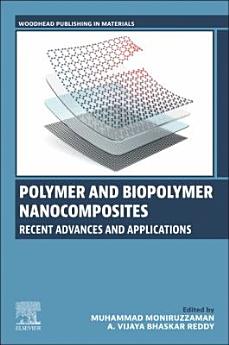Polymer and Biopolymer Nanocomposites: Recent Advances and Applications
About this ebook
About the author
Dr. Muhammad Moniruzzaman completed his M.Sc. and Ph.D in Biochemical Engineering from Kanazawa University, in Japan. He received his B.Sc. in Chemical Engineering from the Bangladesh University of Engineering and Technology in Bangladesh. In 2007, he joined Prof. Masahiro Goto’s group at Kyushu University as a prestigious JSPS (Japan Society for the Promotion of Science) post-doctoral fellow. He is currently an Associate Professor in the Department of Chemical Engineering at the Universiti Teknologi PETRONAS in Malaysia. His research interests include the design and development of non-toxic and biodegradable ionic liquids and polymer composites for application as green materials in a wide range of different engineering fields including biochemical engineering, in environmental science and engineering, in surfactant technology, and biomass processing and pharmaceutics. He has published more than 200 publications in peer-reviewed scientific journals, 1 edited book and 18 book chapters.
Dr. A. Vijaya Bhaskar Reddy obtained his master’s degree and Ph.D in Chemistry from Sri Venkateswara University, in Tirupati, India. He is currently an Associate Professor in the Department of Chemistry, at Atria Institute of Technology, Bengaluru, India. His current research interests include the development of green ionic liquid-based polymers and polymer composites for the extraction of rare earth and precious metals and removal of metal and organic pollutants. After completion of his Ph.D in 2014, he joined the Centre for Environmental Sustainability and Water Security (IPASA), at the Universiti Teknologi Malaysia where he was actively involved in the development of various polymer and non-polymer-based adsorbents for the removal of emerging pollutants in water. In 2018, he moved to the Centre of Research in Ionic Liquids (CORIL), at the Universiti Teknologi Petronas. As a postdoctoral researcher, he has conducted extensive research on the development of Ionic Liquid-based polymers and their application in CO2 capture and separation, dye removal, oil dispersion and recovery of biomolecules through emulsion-based membrane techniques.




